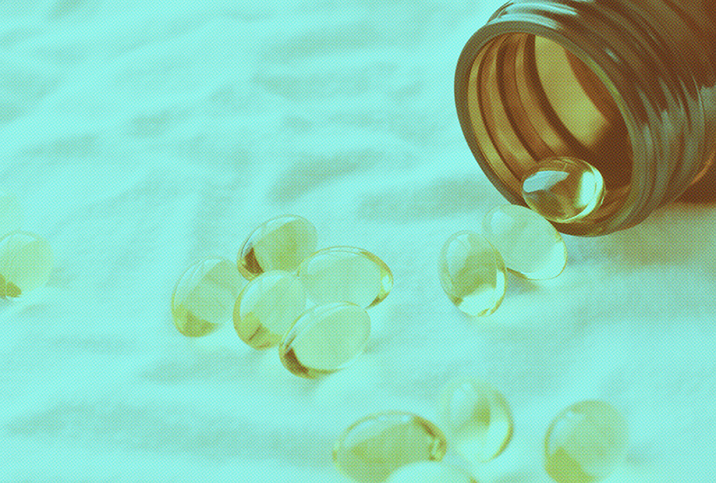How to Know When Your Period Is Coming

Despite the common perception, not everyone has a 28-day menstrual cycle. In fact, 21 to 35 days is considered "normal," and your cycle length might fluctuate depending on the month.
For people with irregular cycles, predicting when your period is on the way can be tricky. Thankfully, your body gives signs to let you know which phase of the menstrual cycle you're experiencing.
Vaginal discharge can be a clue
Vaginal discharge is one way to tell where you are in your cycle. Some women use it as a sign to determine when they are most fertile to increase their chances of pregnancy. However, looking at your discharge can also hint at how far away your period is.
"Women may notice increased vaginal discharge prior to her period since there are hormone changes which change the vaginal secretions," said Shannon Scott Schellhammer, M.D., an OB-GYN at Orlando Health Winnie Palmer Hospital for Women & Babies.
A few days before menstruation starts, discharge usually exhibits a sticky consistency. During ovulation, or just before, women typically experience the most discharge. As estrogen levels peak, discharge typically has a thick, white consistency. However, once the estrogen levels drop, the discharge looks thick and pasty.
Some women experience more discharge than others, and it's usually normal. If it looks off in color or has increased in volume, it might be time to call your gynecologist and make sure you're not battling an infection.
Cervix position
Your cervix is the soft, small, donut-shaped tissue at the lowest region of the uterus. Throughout your menstrual cycle, the cervix changes position, preparing for a possible pregnancy.
During ovulation, the cervix is higher up, deeper in the vagina. To prepare for your period, your cervix drops lower and softens. Tracking your cervical position consistently can help you identify the changes in your cervix position and know where you are in your menstrual cycle.
PMS affects almost everyone
Premenstrual syndrome (PMS) is a collection of symptoms women often feel the week or two before menstruation begins. As unpleasant as some of the experiences are, the arrival of these symptoms can offer relief and more information on when you can expect bleeding to begin.
More than 90 percent of women say they experience some form of PMS symptoms, according to the U.S. Department of Health and Human Services Office of Women's Health. While most women suffer from PMS, the severity of the symptoms vary.
PMS symptoms are caused by changing hormone levels. Typically, after a period starts and hormone levels begin to rise, PMS symptoms dissipate.
"Before your period, you have a shift in hormones and a drop in progesterone and estrogen. This can lead to the variety of symptoms noted in the premenstrual syndrome," Schellhammer explained.
"After ovulation, which is the midpoint of your menstrual cycle, women can experience premenstrual syndrome. This can have a wide range of body changes, such as swollen and tender breasts, bowel changes, bloating, cramping, headache, irritability, appetite changes and mood swings," Schellhammer added.
The list of possible symptoms is long, but the actual experience is different for everyone. Some women experience mild symptoms—a light headache, minor cramping—while for others, symptoms are so debilitating they miss work.
Let's dive into some of the more common symptoms and find out why they happen and what you can do to alleviate the discomfort.
Cramping
During your cycle, your uterus contracts and expands, causing menstrual cramps. For some women, however, cramping is not limited to menstruation, and they experience pain the week before. Hormonal changes can cause aching in your stomach, back or other areas of your body.
Other causes of PMS cramps include endometriosis, uterine fibroids, cysts and ovulation pain.
Applying heat through a heating pad or hot bath can help relax your uterine muscles. Pain relievers such as Midol or Advil might help. As counterintuitive as it might feel, light exercise can reduce pain.
Breast tenderness
Breast pain before your period is caused by the peak in progesterone. You might experience it a week before your period is due, and the pain should subside as hormone levels drop.
However, breast pain can still be experienced after your period.
"Estrogen levels increase in the second half of the menstrual cycle, causing pain and swelling," explained Kecia Gaither, M.D., an OB-GYN certified in maternal-fetal medicine and director of perinatal services at NYC Health + Hospitals/Lincoln in the Bronx in New York City.
A cold or warm compress may alleviate some of the discomfort. If your breasts are swollen, wear a loose bra or no bra, if possible). Limiting caffeine and taking over-the-counter pain relief medication may help, too.
Acne
If you notice your skin is more sensitive to breakouts just before menstruation, you aren't alone. More than 50 percent of women showed a 25 percent increase in acne during the premenstrual period, according to a 2004 study published in JAMA Dermatology.
Progesterone is usually the culprit of acne before a period. Just before your period, progesterone levels are rising, which can contribute to skin breakouts because progesterone increases the skin's sebum production. The hormone fluctuations can also decrease the immune system function, possibly leading to increased breakouts.
Treating period breakouts can be difficult, but keeping up with your regular skincare routine can help. If you find hormonal acne to be untreatable, see a dermatologist who can prescribe medication to better target the issue.
Fatigue
Fatigue is one of the most common PMS symptoms, and as annoying as it is, it's usually normal. Right before your period starts, your serotonin levels fluctuate, which can affect your mood and sleep patterns, leading to tiredness.
Create a healthy bedtime routine by turning off electronics in bed, keeping the air conditioning low and aiming for eight hours of sleep. Exercise can also increase your energy levels.
It's different for everyone
Unfortunately, there is no clear sign announcing the immediate arrival of menstruation. Many of us who thought we had more time only to ruin a pair of underwear would love it if there were. Everyone's a little bit different, and some women experience symptoms at different times in their cycle.
"Some women experience these symptoms for the days leading up to their period, and others have no symptoms at all," Schellhammer confirmed.
Getting to know your body and your "normal" can help you predict when your period will begin. Tracking your symptoms can be a great place to start.


















